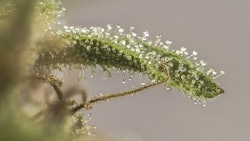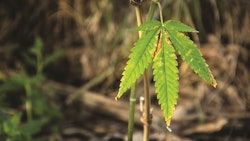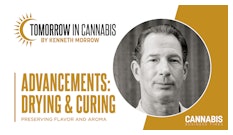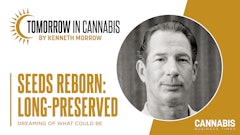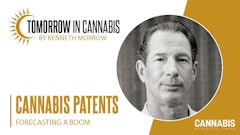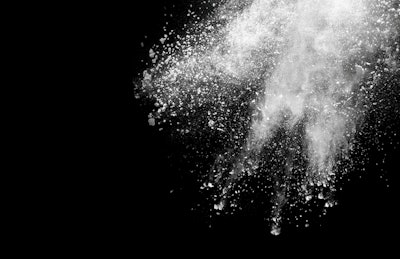
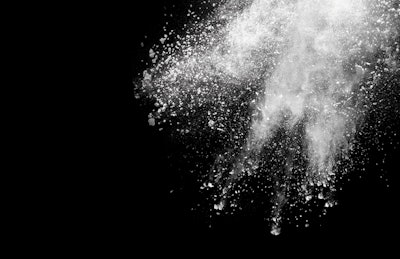
Emerging data states that powdery mildew (PM) and the availability of fungicides that prevent or control it are major concerns in cultivation. Given the cannabis plant’s susceptibility to powdery mildew infection, the first line of defense must focus on prevention.
Prevention begins with the design of the facility or greenhouse, efficient standardized operating procedures and pest-management protocols that can be implemented on a large scale. Here are some considerations and tips to stop a PM outbreak before it happens.
1. Introduce Clean Genetics/Clones Only From Trusted Sources
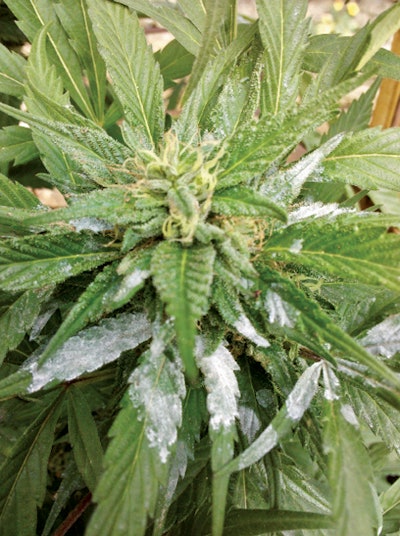
When purchasing clones, take specimens to a lab to confirm there is no powdery mildew present and that no banned chemicals (such as myclobutanil) have been applied. You must do this step with every plant before it’s introduced into your facility. A quarantined environment that is compartmentalized and sterile must be employed to ensure that all new specimens of plants receive a clean bill of health before entering the facility (more on this below). Otherwise, you risk infection.
2. Decontaminate Tissue Cultures and Clones
Tissue-culture growers sterilize specimens prior to installation by utilizing bleach, alcohol, soap and purified pH-adjusted water. They mix one part bleach with nine parts distilled water and repeat the formula with alcohol, phosphorous-free soap, and a final rinse with water with a pH of 7 or above-each in their separate containers. They briefly submerge the plant material in the bleach cleaner, then remove and rinse it in the pH-adjusted water, then move it to the alcohol cleaner, then rinse again.
The same method can be employed to clean or wash plants before they enter the quarantine area. Some plants may only tolerate half-strength washing-as the method of using stronger solution ratios can be detrimental to young plant tissue. But typically, cultivators may add between 5-percent and 10-percent additive to the distilled water. The final rinse solution can also include 1-percent to 2-percent sodium bicarbonate (baking soda) as a mold inhibitor while plants are in quarantine. In case any plants turn up infected, the proliferation and environment contamination will be minimized.
3. Create Positive Air-Pressurized Environments
A positive-air environment means that you have forced air into the grow area so that when a door is opened, air is forced out that door rather than in, possibly carrying diseases and pests into the facility. You can use a differential pressure gauge to see if a given environment is positively or negatively pressurized.
4. Ensure Proper Airflow
Excessive wind speed is detrimental in that it can damage leaves and break branches, plants and young plant tissue. Inadequate airflow also presents a host of problems that can lead to powdery mildew outbreaks. Stagnant air loses CO2, while temperature and humidity rise. Hot, humid air typically rises. And in improperly ventilated environments, this creates a perfect scenario for powdery mildew proliferation. Lack of airflow between plants is also detrimental in that the plants transpire moisture out of their leaves, which contributes to environmental moisture levels. Combine elevated moisture levels between plants, as well as depleted CO2 and oxygen levels at the plant leaf canopy and root zone, and you have a recipe for disaster.
A constant, 13-mph, temperature-controlled, humidity-controlled, and oxygen- and CO2-rich breeze is preferred to avoid dead air zones.
5. Filter and Sterilize Incoming Air
High efficiency particulate air (HEPA) filtration should be employed for all incoming air in both indoor and greenhouse environments. All air must be filtered to eliminate the possibility of powdery mildew spores from entering the facility. Be sure to meticulously maintain your filtration systems.
After the air is filtered, it must be sterilized either electronically or via ultraviolet (UV) sterilization, or other means. Many methods and apparatuses can sterilize air. Greenhouse growers may also utilize specifically sized bug screen filters on air-intake sources for pest prevention.
6. Maintain and Decontaminate All Equipment in the Environment With Hydrogen Peroxide
This includes proper decontamination of all air-ventilation ducting-both intake and exhaust-which must be performed in between each growth cycle.
7. Over-Emphasize Cleanliness

While perhaps obvious, again and again I see people who don’t make the correlation between decaying plant material on a wet floor-combined with excessive standing water in the growing environments-and disease outbreaks. Eliminate all dead and dying vegetation and leaves from a growing environment. Standing water can influence environmental humidity levels, as well as aid in the proliferation of both powdery mildew and green algae. Neither are beneficial in any growing environment.
8. Control Humidity
Extreme humidity situations aren’t conducive to healthy plant growth. Therefore, a proper method of dealing with both high and low humidity levels is a must. In climates such as Denver’s, for example, these high-low humidity swings can occur within the same 24-hour period. Either situation causes undo stress and creates the perfect environment for powdery mildew. Many options exist for regulating humidity. Consult an HVAC technician familiar with cannabis cultivation about all variables of your facility, and they will explain the available options for your specific needs in your cultivation facility’s given geographic environment.
9. Decontaminate All Personnel Entering Facility
All personnel entering the facility must have a decontamination area where they can change out of civilian clothes and into work attire. This prevents or minimizes the risk of outside infection sources. Some large-scale facilities require employees to further decontaminate both hands and feet.
10. Adjust for Temperature Differential
In this case, temperature differential refers specifically to the gap between the day’s elevated temperature and the night’s low temperature. This is most important at sundown (or right after lights out), when excess moisture should be ventilated-as reaching dew point increases moisture levels on the leaves’ surface (and thus, aids in the proliferation of PM). Venting directly from the outside environment without pre-conditioning the air can also make the environment susceptible to PM. Properly heated or cooled ventilation (whichever is required) must be utilized in all ventilation systems.
11. Optimize Vapor Pressure Deficit
Adjusting the vapor pressure deficit (VPD) of your grow is an advanced humidity-control technique. VPD is technically the difference between the amount of vapor in the air and the maximum amount of vapor that the air can hold at a particular temperature. VPD scale is a method of growing to make sure the optimal pressure level is exerted on the plant consistently throughout the grow at different humidity levels.
Once optimal VPD levels are determined, you can adjust for your desired humidity using dehumidifiers, increased air flow, AC and other methods. The result: optimal plant growth for higher yields. Typically, low-VPD plants look nice, but are susceptible to pest and disease. Ultimately you must find the “sweet spot” for each different environment.
It is impossible to control these variables without proper automated environmental controls. These controllers allow you to refine and experiment with any variable you wish. Controllers also log and track any changes so that comparisons can be made. Uncontrolled environments are risky at best, and are far from real-world agriculture.









